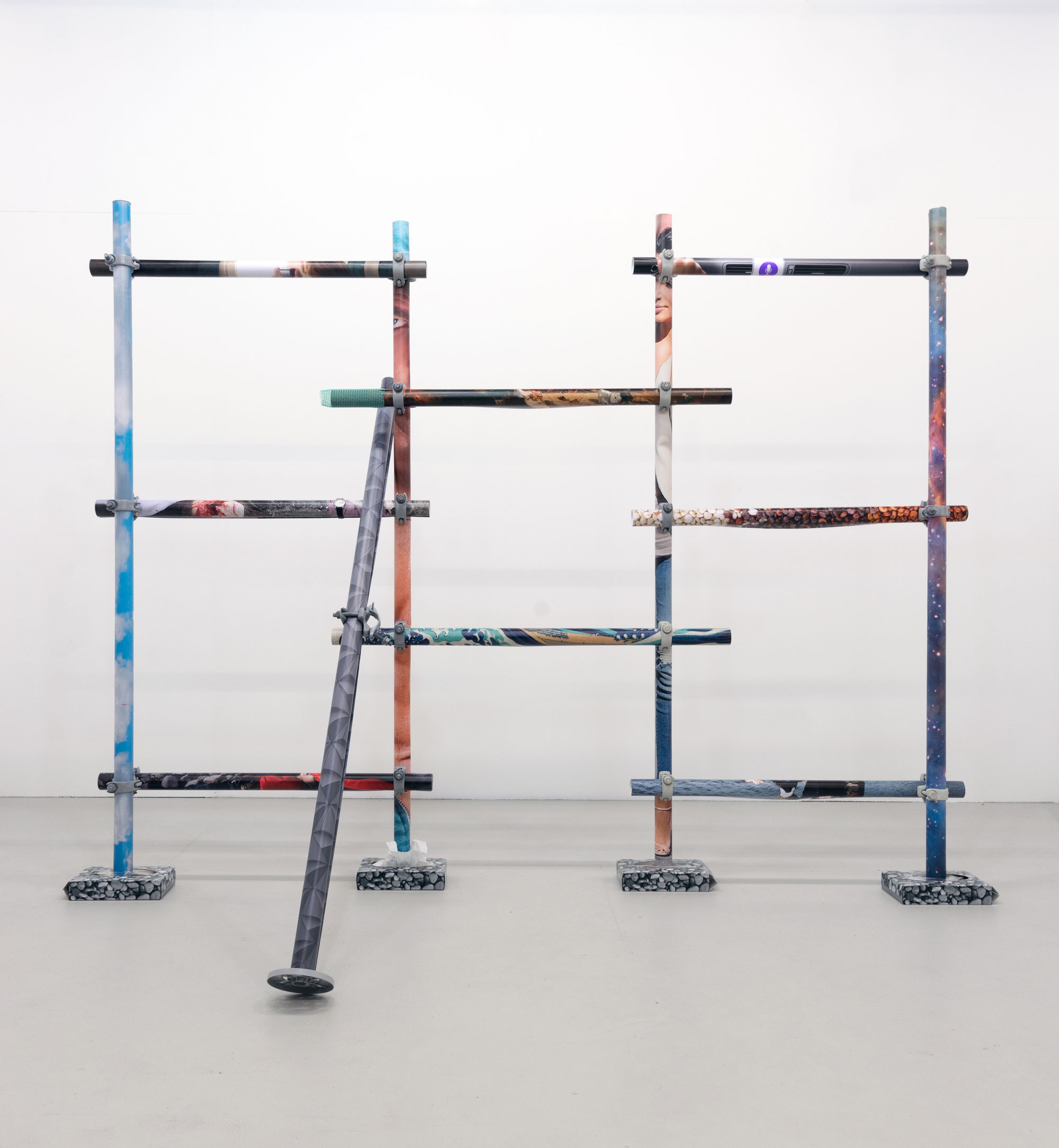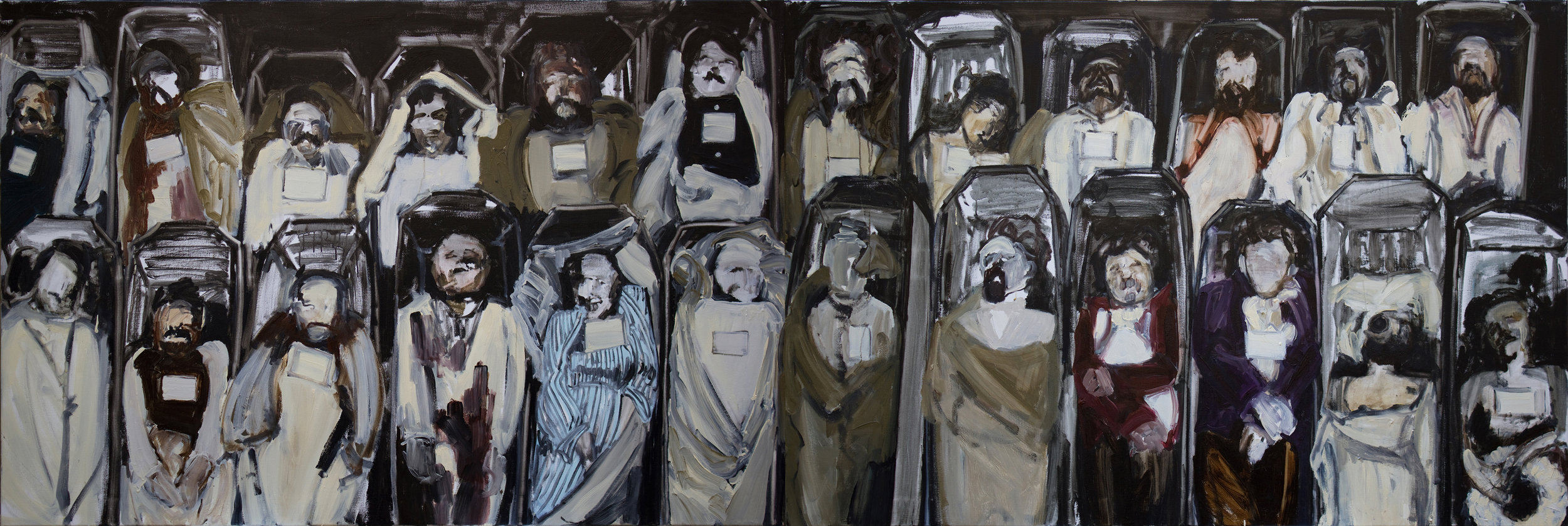Adam de Neige

"In my work, there´s always a certain degree of reduction, even with a mainly figurative depiction."
Could you tell us a bit about yourself. How long have you been a practicing artist and where did you study?
I’m 29 and I studied at the Ecole des Beaux-Arts de Lyon (Bachelor) and the Academy of Fine Arts Vienna (Master).
Your work varies with each project, from painting to sculpture. Could you tell us about the new series of works titled “Seamless”?
Seamless is a project in two parts conceived for my solo exhibitions in MUSA (Vienna) and Traklhaus (Salzburg). Firstly, there is the physical part, composed of Concrete Painting – to be taken literally- and a Sea Salt Installation. The project evolves around the the idea of access and exchange. On one side, Seamless reflects on the current refugee crisis and how the human condition and its freedom of movement is still an unsolved issue. You see the problem when you compare this to the freedom of exchange of information & goods. On the other side, there´s a free access virtual reality video which is a reflection on Art itself and omnipresent physical barriers. In arts, you usually need to be there to see it.
Tell us a bit about how you spend your day/studio routine? What is your studio like?
I do have my own studio where I’m constantly thinking, experimenting and creating new works. Inside the studio, there are always different works I intermittently work on. I don’t have constant overall habits but routines developed for different projects. I don´t create or arrange my works intuitively, but I´m researching and pondering about conceptional relations for a rather long time. The outcome should ideally have a light touch to it, however. When developing and researching conceptional ideas I often interrupt the physical creation for some weeks. For example, new applications for new materials. Often, due to new techniques, I need to create new ways to collaborate or work. But I usually copy skills from professionals rather than commissioning the technically challenging parts of my artworks.
I from the series Seamless, 2016
II from the series Seamless, 2016
III from the series Seamless, 2016
IV from the series Seamless, 2016
Seamless (installation shot), MUSA Gallery, 2016
The major piece “Beneath The Flow” was set in the waters of Venice, for the Biennale 2015, the logistics must of been very challenging. Could you tell us about this project?
The first step, submerging waterproof suitcases with the artworks inside was the easiest one, because it happened one month before the opening of the Biennale and there was no tight schedule to mind!
But the performative part during only 4 days of preview was definitely challenging. We needed to invite journalists, curators and collectors (already overwhelmed by all the other events) to participate in the guided tour. Fortunately, I had a team helping me to manage the project!
How do you go about naming your work?
Sometimes I do have a title even before fully developing the project. But often there is no need for a title, so I don’t choose any! I think the project must have a title, but not necessarily all included artworks - they are all part of a bigger ensemble.
What do you hope the viewer gains/reacts from looking at your work?
The eye of the beholder may be tricked for a moment. But in the end, it is her or him who creates the artwork. That´s why I leave a lot of space for them. In my work, there´s always a certain degree of reduction, even with a mainly figurative depiction.
I often use banality just for what it is, but in a playful way, wanting to sublimate, or sublate, concepts that I use. Banality can come as a strike against conceptional density. Once you think about it longer, however, you'll often find a lot of metaphorical relations or a kaleidoscope of significations.
Beneath The Flow, Venice Biennale, 2015
Beneath The Flow (locations)
Beneath The Flow - Guided Boat Tour (video), 2015
What artwork have you seen recently that has resonated with you?
I joined a curatorial tour through the exhibition of Nathalie du Pasquier and I was impressed by the way she used her paintings and design works to create a one work exhibition, a unity. How intuitive she combined, played and experimented with the artworks and elements of the exhibition! I really liked it because it’s totally contrary to how I’m working!
What does the future hold for you as an artist? Is there anything new and exciting in the pipeline you would like to tell us about?
I love collaborating and not exclusively with artists! And I always try out new forms and techniques, so I´m interested in other people's´s ideas. I’m developing a couple of projects (all related together) involving technologies of visual data simulation and interactive art, to name some. It’s sometimes hard to find a balance between technology, science and art and a risk of getting lost while researching. However, I’m really excited about how things are evolving!
Interview published: 30/09/16





